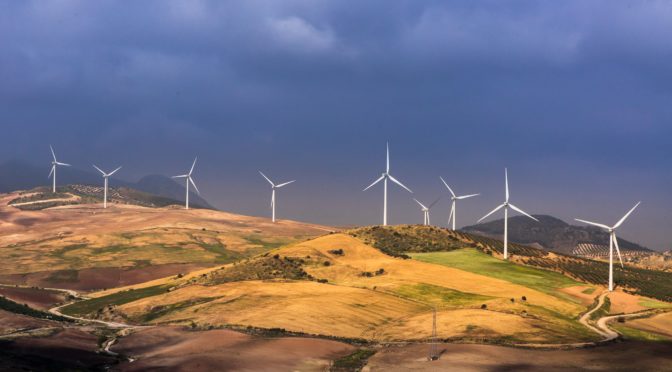AEE held on July 1 a digital meeting with its partners in collaboration with PwC. At the meeting, with more than 300 attendees, the recently approved Royal Decree-Law 23/2020 was analyzed. These are the main conclusions.
Royal Decree-Law 23/2020 constitutes the first step in the roadmap that will mark the future Law on Climate Change and Energy Transition: it introduces important innovations regarding access and connection procedures, resolves doubts and clarifies the hybridization and assumes the need to streamline administrative procedures. It also prepares to take new steps through auctions and through the intervention of the Autonomous Organism of Just Transition.
The RDL offers answers to doubts raised by the sector and, nevertheless, leaves unknown other aspects that from this digital meeting of PREPA, and with the collaboration of PwC experts, we have analyzed making a complete reading of the challenges and changes it proposes the Royal Decree-law.
The main conclusions of the meeting have been the following:
RDL Overview
• The RDL reflects, to a large extent, the work well done and recently developed by the wind sector to advance the roadmap for long-term wind power.
• This RDL is a positive signal for the future of renewables and to achieve the objectives of the PNIEC and the Green Energy Deal.
Access and connection
Fernando Calancha, Partner in charge of the regulatory department of PwC and Secretary General of AEE
• The regulation of access and connection aims to avoid the suspension of solvent and mature projects.
• The deadlines for milestones are not procedural norms that regulate the duration of the procedure: the problems that will arise will be related to the admission or delays in administration, as well as Specialties regarding the termination, execution and precautionary suspension .
• Consideration of the same generation facility for the purposes of access and connection permits: “same facility” will be considered for the purposes of access and connection permits, if generation technology, access capacity (no more 5% of that which appears on the permit) and geographical location (not differ by 10 km).
Hybridization
José Amérigo, Partner Tax & Legal Services of PwC
• Royal Decree-Law 23/2020 implements a new legal framework that incorporates hybridization, which results in increased electricity production and optimization of network use.
• Purpose of incorporating hybridization is for an efficient design of facilities taking advantage of hybridization for optimal use of renewable resources, and to optimize energy evacuation and solve current network saturation problems.
• Formula that is used to incorporate hybridization:
– The same facility is considered for the purposes of access and connection permits.
– In the same location as the hybrid installation.
– Installation of higher nominal power if the maximum authorized discharge capacity is respected.
Renewable auctions
Óscar Barrero, Partner responsible for consulting services in the PwC Energy sector
• The new auction design must strike a balance between providing the necessary momentum, especially in the current context, and avoiding market distortion.
• Key aspects remain to be determined regarding the design of auctions. Some of the key elements of the auction design announced in the RDL project are the following:
– Energy products, power or a combination of both.
– Assignment under an ascending pay as bid mechanism.
– Establishment of quotas for technology.
– Prices offered with two decimal places (tiebreak criteria).
– Possibility of maximum reserve price and minimum risk price.
– Pending the deadlines of the products.
– Symmetric adjustment coefficients for market share.
– Impossibility of declaring bilateral contracts.
– Collection exemption price (€ 0 / MWh).
– Economic balance of the auction passed on to OMIE, in the purchase units.
– Mechanisms that guarantee the maturity of the projects presented.
Developments in administrative procedures
Reyes Gómez, Director of the Regulatory Department of PwC
• The administrative process for processing projects is a fundamental lever to meet the PNIEC’s objective by 2030, so that any improvement in its definition or execution will advance renewable deployment.
• At the state level, the total regulatory processing deadline, if the deadlines are 2 years and 11 months (simultaneous processing) and 4 years and 5 months (not simultaneous).
• Royal Decree-Law 23/2020 has introduced certain novelties that are positive to streamline the administrative processing of facilities:
- Modification of Royal Decree 1955/2000: Extension of deadlines and elimination of reiteration of requirements in the AAP process (“positive silence”).
- Modification of Royal Decree 1955/2000: Non-substantial modifications and consideration of the same installation for the purposes of access and connection.
- Modification of the LSE regarding authorizations.
Modifications in environmental processing
Pablo Baquero, Director and head of the Asturias-Cantabria PwC office
The novelties introduced by Royal Decree-Law 23/2020 in Law 21/2013, of December 9, on environmental assessment are related to:
• Request from the promoter.
• Consultations with the affected Administrations.
• Validity of the scope document.
• Extension of the DIA.
• Environmental impact study (simplified procedure).
• Extension of the environmental impact study.
Review of the market price and CO2 during the alarm state
Ramón Vázquez, Director of the Regulatory Department of PwC
Impact on the wind sector:
• Not affecting the future pool.
• It does not affect remuneration parameters of the wind sector.
• PPAs.
• Reflection: Short-term coverage? Long-term?.
Pool evolution during alarm state:
• Pool prices have decreased by 15% – 20% compared to similar periods in 2019.
• This fall is a consequence of the decrease in demand due to COVID-19, the drop in the price of commodities also conditioned by COVID-19, but also due to higher wind and hydraulic production due to weather conditions.


